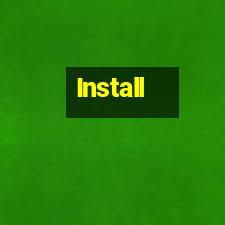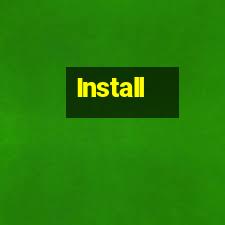
How to Install Windows 7 - Introduction
There are three main versions of Windows 7 and this guide covers how to install Windows 7 in any of these variants.Actually there is a fourth version, Windows 7 Starter, but this is only available pre-installed on netbooks etc and it is limited in its capabilities compared to the other versions on offer.If you are building a new PC then you can purchase an OEM version of Windows 7.You will find this a much cheaper alternative to the full retail version, the only difference being the lack of telephone or any technical support.
Mountains of support is available on the internet for any problem you are likely to come up against though and unless you really want to pay for this we would strongly recommend that you stick with the OEM version.
We would recommend the ‘Windows 7 Home Premium’ version as the most suitable for home users.The ‘Windows 7 Home Premium’ option gives the best features verses price trade off.
The other thing to consider is whether to opt for the 32 bit or 64 bit version. If you have a 64 bit processor installed in your PC then you will most likely want to purchase the 64 bit version to ensure you make full use of the extra performance available to you. A 64 bit processor and operating system will also allow you to access RAM above 4GB.
Do be aware though that some of your software may not be 64 bit compatible and it is worth checking this out before deciding.Ok, so you are probably going to opt for the OEM version but remember that the OEM version will not come with a pretty box or manual although you will save a truckload of money over the retail version.
If you are constructing a new PC then you will already be performing a clean installation but if you are simply upgrading we would still always recommend a clean installation of Windows 7 rather than an upgrade or re-install over your current Windows Vista installation.
Note that Windows XP users will only have the option to perform a ‘Clean’ install; the upgrade option is only available to Windows Vista users.
Any problems you may have with your current installation may still be there after you re-install / upgrade and some applications may not work correctly requiring you to re-install these anyway.
A clean installation will require that you back up all your files and folders as a clean install will wipe your hard drive of everything including your settings and programs.
You can make use of Windows Easy Transfer (available from the Microsoft site or on the Windows 7 installation DVD) to help you with this. Windows Easy Transfer will help you to copy your data together with your program settings, email, photos etc to an external hard drive, USB drive or on to a DVD.
Windows Easy Transfer can be used for migration of files and settings whether you are currently running Windows XP or Windows Vista.
Even with this facility available to you do please ensure that you have separately backed up any documents photos and music files etc that you simply cannot afford to lose to a safe medium that you are sure you can restore from. See our page on Data Backup to avoid any potential disasters.
How to Install Windows 7 – Installation
You can boot directly from your Windows 7 DVD. Insert the Windows 7 Installation DVD into your optical drive and the installation should begin.Note that you may need to enter your PC BIOS to change the order of boot devices if you are upgrading from Windows Vista or re-installing otherwise your PC may simply start up with your current version of Windows.
The BIOS can be accessed at start up by pressing the Del, F1, F2 or ESC key dependant upon your BIOS version and manufacturer. Once you are in the BIOS look for the ‘Boot Order’ sub menu which you will find listed under one of the main menus – probably listed as ‘Advanced’.
You will need to use the arrow keys and enter/return key to navigate around the BIOS instead of your mouse which will not work.
Now make the CD/DVD drive top of the boot order list by using the + and – keys to sort the boot order of the listed drives.The first screen you will see informs you that Windows is loading files – just sit and wait for Windows to finish, it doesn’t take long.







Note that if you are installing on and old drive with data already on it you will get the option to install on one of the logical drives (maybe more than one logical drive if the drive has been partitioned). There will also be options available to allow you to format the drive thus erasing all of the data on it or to create, delete or expand partitions etc. Once again, do make sure you have backed up all of your data!
Select the unallocated drive and then click on ‘Next’ and wait while Windows 7 installs itself on your brand new drive.

That’s it for now, you’re in for a bit of a wait while Windows gets on with installing itself on your hard drive. Time to get a coffee perhaps!

After a long wait (may be an hour or longer depending upon your setup) you will be greeted with a ‘Welcome’ screen and ‘Windows is finalising your settings’ screen.






Tick the ‘Automatically adjust clock’






Now click on ‘Windows Easy Transfer’ to run the program and then click on ‘Next’.Click on the option ‘An external hard drive or USB flash drive’ and then click on ‘This is my new computer’ and you can now proceed to re-instate your backed up files, settings and folders from the backup file you created earlier.
How to Install Windows 7 – Setting up your New Computer
Your new computer is up and running but there is a number of things that you need to do before you can put your PC to good use.How to Install Windows 7 – Drivers
First off we need to install the correct drivers for the motherboard, graphics card etc.Windows 7 will scan your system to see what hardware you have installed and then install the relevant drivers for these drivers. If it recognises your hardware correctly then this shouldn’t be a problem, but driver updates are pretty frequent and also depending upon what you have bought, you may not have the correct versions of drivers i.e. it may be a Windows 98 or XP driver that has been supplied on your disk and this will not work with Windows 7.
The best advice is to see if you can go to the motherboard, graphics card etc manufacturer web site and then search for your model number. When you get to the details for your device there should be an option to download the latest drivers for your particular operating system. Download these and burn to a disk or copy to a USB stick ready for installation on your new PC.
To confirm that all of your drivers have been installed correctly go to ‘Start’ > ‘Control Panel’ > ‘System and Security’ > ‘System’ > ‘Device Manager’.




If you find any exclamation marks then simply double click on the device and then select ‘Driver’ where you will be given the option to update the drivers for this device.

No comments:
Post a Comment